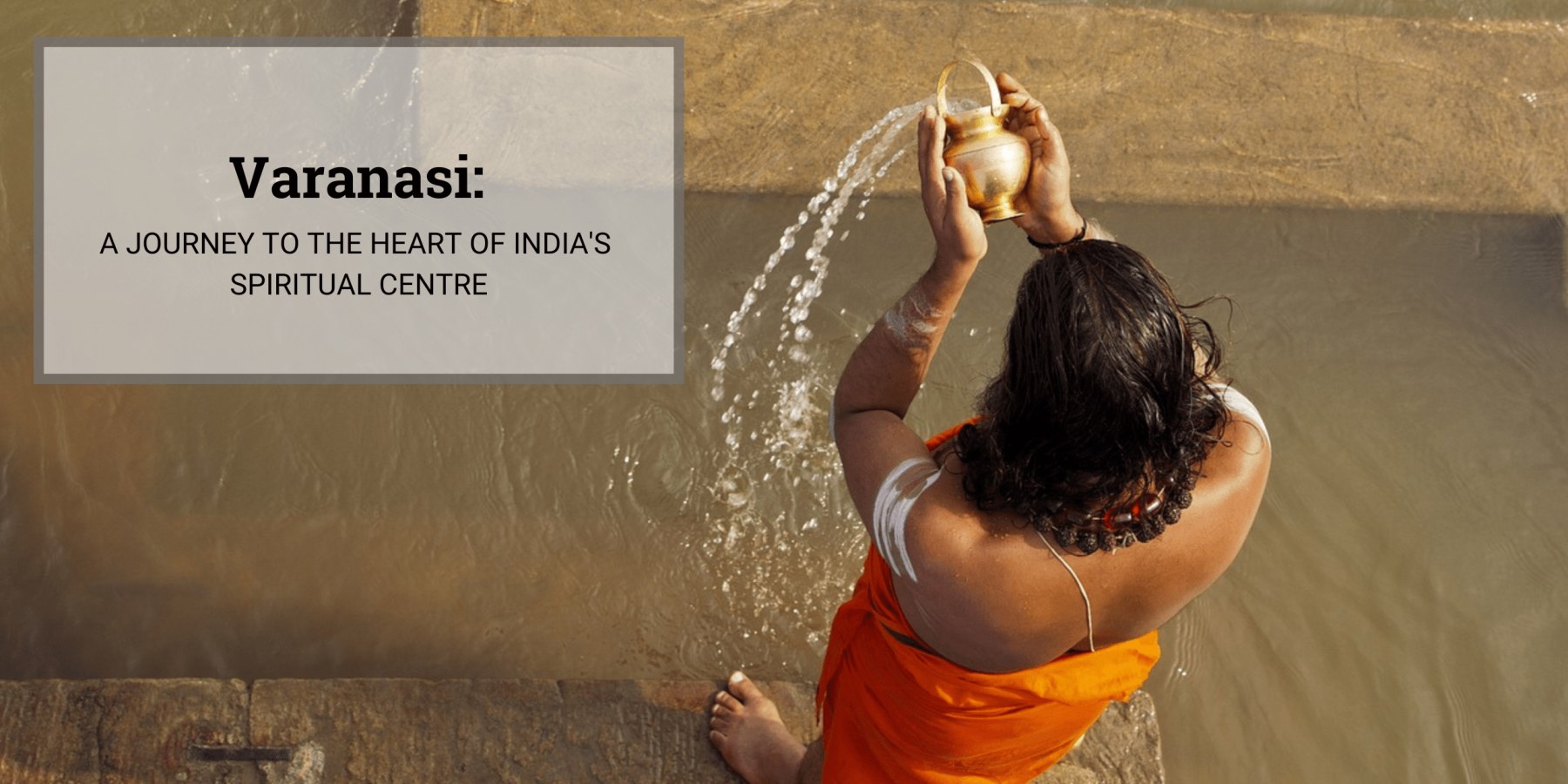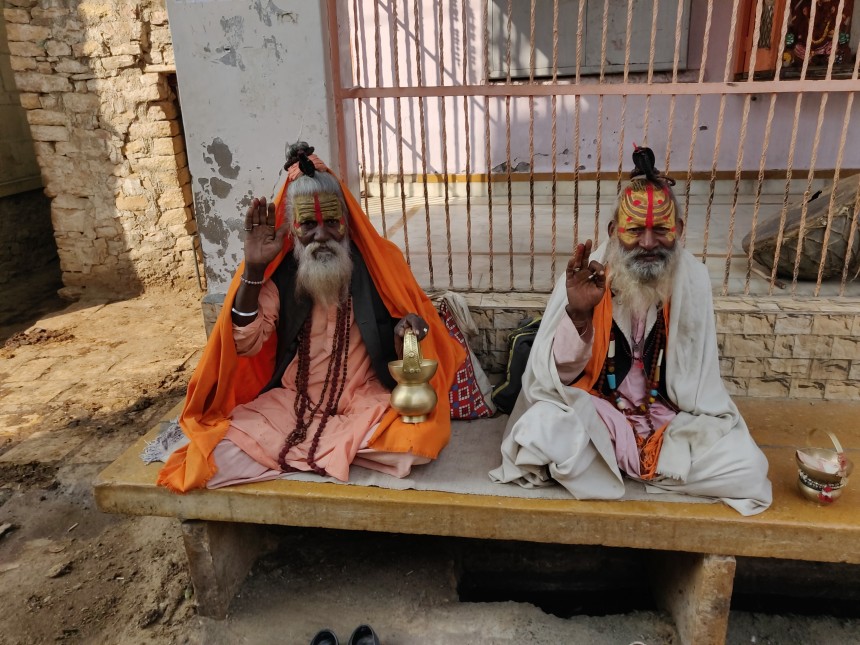| 6 mins read
Mark Twain once said, "Varanasi is older than history, older than tradition, older even than legend and looks twice as old as all of them put together."
Nestled on the banks of the Ganges River, Varanasi has been the epitome of spirituality and mysticism for centuries. Breathing since the ages of Rigveda and the Mahabharata, the holy land offers a journey through time and culture that leaves visitors spellbound! As per the pre-COVID report by Uttar Pradesh Tourism Department, the city welcomes annual tourists of around 10 million (domestic and international). Therefore, for anyone seeking a once-in-a-lifetime experience, this is the right place!
Read along to know the mystical allure of Varanasi through its magnificent temples, serene ghats, the sacred Ganges, and unique places (where people come to spend the last days of their lives!), all of which can be best explored with a local guide on your next visit.
Temples: The Divine Sanctuaries
The moment you enter the city, the air is filled with the reverberating sounds of bells and hymns, creating an atmosphere that speaks of devotion and serenity. What adds more beauty to these divine houses is that they differ in architectural charm and stand as a testimony to different mythological stories.
In addition to the famous Kashi Vishwanath temple, the Sankat Mochan Hanuman Temple is another significant temple visitors should not miss! This temple is dedicated to Lord Hanuman, the monkey god, and is known for the monkeys that reside on the temple premises! A few other well-known temples are the Nepali Temple (also known as the Kathwala Temple, which was built in the 19th century by the King of Nepal and is a must-visit for its intricate wood carvings and impressive architecture) and the Durga Temple, recognised for its vibrant red colour and Nagara-style architecture. Devotees flock to this temple to offer their prayers to Goddess Durga, the deity of strength and power. Lastly, the Tulsi Manas Temple is also a crucial site, believed to have been built on the very spot where Tulsidas composed the sacred text of Ramayana. The temple features beautiful murals and statues depicting scenes from the epic tale of Ramayana, making it a popular destination for visitors seeking cultural and religious immersion.
Pro-tip: It’s advised to go with a local guide to enhance your experience and enjoy a comprehensive temple tour throughout the day. The local guide can regale you with captivating mythological stories and insights into the area's rich heritage.
Ghats: Stairways to Salvation
Ghats, or the riverfront steps leading down to the Ganges, serve as platforms for various religious and cultural activities. They are the focal points of the city's spiritual life and a gateway to salvation for countless devotees who visit the city in search of enlightenment and purification.
Do you know there are around 88 ghats in Varanasi, each with its unique history, spiritual significance, and purpose?
One of Varanasi's most prominent and busiest ghats is believed to have been created by Lord Brahma to welcome Lord Shiva, named the Dasaswamedh Ghat. This ghat is known for its vibrant atmosphere, with pilgrims performing rituals, offering prayers, and taking holy dips in the Ganges. In fact, it is the best spot to witness the famed Ganga Aarti. Other ghats equally serve as a religious hub are Assi Ghat (famous among spiritual seekers, artists, and tourists who gather here to meditate and practice yoga), Scindia Ghat (known for its partially submerged Shiva temple) and Kedar Ghat (famous for the Kedareshwar Temple).
The River Ganga: The Lifeline of Spirituality and Purification
Every year, millions visit Varanasi to take a holy dip in Ganga. Do you know why?
The sanctity of the Ganga is rooted in ancient Hindu mythology, a story of Ganga's descent from heaven to earth. According to legend, the sage Bhagiratha performed rigorous penance to bring the Ganga down to earth to purify his ancestors' sins. As the river descended, Lord Shiva caught the torrential flow in his matted locks to prevent the earth from being washed away. Since then, Ganga has been believed to carry the divine essence and blessings of Lord Shiva, which is why it is revered as a source of purification and spiritual liberation. Apart from the holy dip, another immersive experience is the Ganga Aarti. Every day after sunset, the ceremony begins and is accompanied by the rhythmic chanting of mantras, devotional songs, and the ringing of bells. The ceremony is an expression of gratitude and reverence.
What more? For anyone visiting the city, a top-notch experience is the early morning boat ride along the river, offering a breathtaking view of the city's ghats as the sun rises. The gentle sway of the boat, the rhythmic sound of oars, and the sight of devotees performing their morning rituals create a serene and spiritual ambience that is truly unforgettable.
Mukti Bhawan: A Sacred Stay for Life's Final Journey
One of the unique experiences in Varanasi is the visit to the Mukti Bhawan, also known as "Salvation House," a compassionate institution in the spiritual city of Varanasi. Established in 1908 by the Kashi Labh Mukti Bhawan Trust, this humble abode offers a sanctuary for the terminally ill or elderly who wish to spend their final days in the sacred city, seeking liberation from the cycle of birth and death.
Nestled in a quiet corner of Varanasi, Mukti Bhawan is a modest two-story building with a central courtyard and a small shrine dedicated to Lord Shiva. The facility provides basic amenities to its residents, who typically stay for up to 15 days. The staff and volunteers at Mukti Bhawan offer compassionate care and assistance to the residents, ensuring that their final days are spent in peace, dignity, and spiritual solace. What is truly heartfelt is that over the years, Mukti Bhawan has touched the lives of thousands of individuals and their families, offering spiritual guidance, comfort, and a sense of closure during life's most challenging moments.
Kabir Math: The Abode of a Mystic Poet
Embraced by all religions alike, Kabir was a 15th-century mystic poet and saint renowned for his verses, which reflected deep spiritual wisdom and the essence of various religious traditions. His teachings transcended the boundaries of caste, creed, and religion and his poetry is famously known as Kabir's Dohas. Today, the Kabir Math, where Kabir lived, composed his poetry and imparted his teachings, serves as a spiritual sanctuary where his devotees gather to pay homage, meditate, and seek solace in his timeless wisdom.
Things to do: On your visit, attend a regular prayer session and spiritual discourse that delve into the depths of Kabir's philosophy. The Math also hosts annual festivals, such as Kabir Jayanti (the next one is on June 4, 2023), the best time to visit with a local guide, which celebrates the birth anniversary of Kabir with much zeal and devotion, featuring cultural programs, poetry recitations and devotional music.
Image source (https://bit.ly/3ULOgSM & https://bit.ly/3omzbuR)- tourHQ's Varanasi Guide, Chandan Yadav


